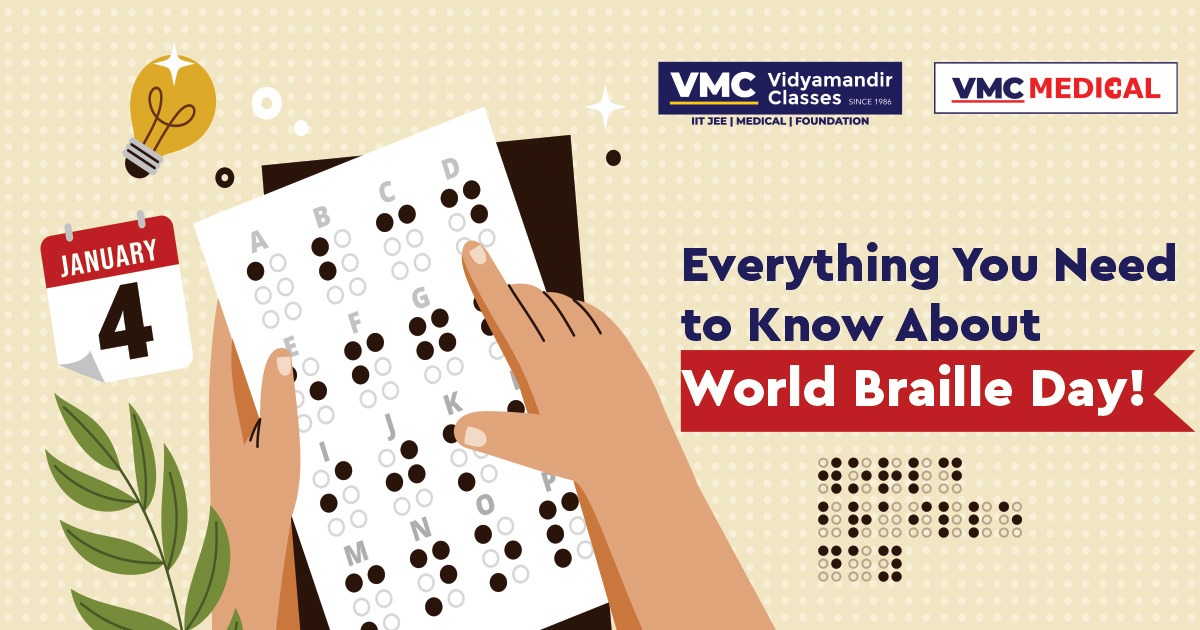Everything You Need to Know About World Braille Day!
 Posted On
Posted On
298 total views, 1 views today
Every Year, World Braille Day is observed on January 4th, to honor Louis Braille and his revolutionary innovation. This day holds a special place in people’s hearts all throughout the world. As we celebrate World Braille Day, we get the chance to consider our own luxury in being able to read without any accessibility concerns and consider how we may support people who lack even basic access to information. Additionally, it is a critical reminder of the significance of the braille system’s development, which gave blind people unprecedented access to education and knowledge.
Know More About Braille!
People who are blind or have impaired eyesight can read Braille, a system of raised dots, with their fingertips. The most popular type of tactile reading is this one.
Louis Braille was born in France in the year 1809. He hurt his eye at the age of three while experimenting with a sharp tool in his father’s workshop. He was rendered blind in that eye by the wound. He eventually lost vision in both of his eyes a few years later.
When Braille was ten years old, he was taken to a school for the blind. Students were obliged to memorize a raised letter system that was employed at the school. However, Louis Braille was not satisfied with this approach. He sought a method of reading and writing that was more effective than memorization.
Braille created his own system of raised dots that could be read by touch in 1824 when he was just 15 years old. His idea was initially only shared with a select group of close friends, but as news got out, additional schools for the blind started utilizing it.
History behind the Braille
The development of Braille has a lengthy, convoluted, and winding history. The Braille system that is used today was really created over a long period of time by numerous individuals.
French army captain Charles Barbier was the first to create a system of raised dots that could be read by touch. The night writing system developed by Barbier was intended to allow soldiers to communicate covertly while it was dark and without disclosing their location. Even while night writing was creative, it was also extremely complicated and challenging to learn.
It wasn’t until 1821 that a young man by the name of Louis Braille came up with a condensed version of Barbier’s system that blind people could quickly learn and employ. By the middle of the 19th century, the Braille system had become widely accepted.
Braille has seen many changes over the years, yet its fundamental concepts have not changed. Additionally, Louis Braille gave blind people a strong instrument for communication and education.
Using Braille in Modern Times
Many people still use Braille to read and write in today’s society. People with limited vision or those who are blind find it particularly appealing.
Braille can be applied in a variety of contexts. Reading Braille books, which are booklets with raised dots in place of printed words, is one option. By tracing one’s fingertips over the dots, one can read the alphabet’s letters, which are represented by them.
Writing Braille is another method to use it. A specific tool called a Perkins Brailler, which has keys that correspond to the raised dots on a page, can be used to accomplish this. These keys can be used to type out words in Braille.
Finally, there is a concept known as tactile graphics, which represents images with raised lines and shapes. Maps and diagrams are examples of things that can use this. Similar to Braille text, tactile graphics can be read by rubbing one’s fingers over them.
Learning Braille has numerous practical advantages!
For those who are blind or visually challenged, studying Braille has several advantages. These people can read and write on their own thanks to braille, which can also be a very useful instrument for communication and education.
Raised dots are used in Braille, a tactile writing system, to indicate the alphabet, numbers, and punctuation. By tracing the lines of writing with the fingertips, it can be read. A dedicated braille embosser or typewriter can also be used to write in braille.
People who learn Braille have greater work prospects and, on average, make more money than those who do not. Additionally, they are more likely to be autonomous and take an active part in society.
Learning Braille has numerous practical advantages, but it may also be fun and make you feel proud of yourself. It can give people a sense of pride and self-assurance, and it can also connect them to other blind or visually impaired people throughout the world.
Final Words
The commemoration of World Braille Day honors Louis Braille’s significant contributions to literacy and education. It’s a chance to acknowledge how his legacy has influenced others who are blind or visually impaired and how it has enabled them to live more autonomous lives. We can contribute to the creation of an inclusive society where everyone has access to the literature, technology, and other resources they require in order to follow their aspirations by raising awareness of World Braille Day and its significance.


